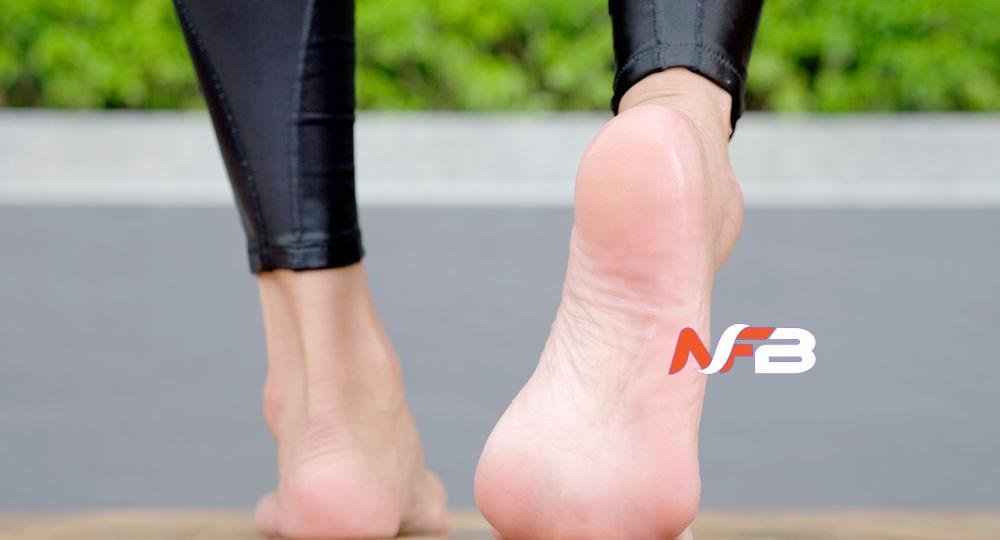Did you know that plantar fasciitis, a common cause of heel pain, can be challenging to treat effectively? While traditional methods like rest, stretching, and orthotics are commonly recommended, there are newer and more advanced treatment options gaining attention in the medical field. From shockwave therapy to platelet-rich plasma injections, these cutting-edge approaches offer exciting possibilities for those struggling with persistent plantar fasciitis.
Discover how these innovative treatments could potentially revolutionize the management of this painful condition with the help of an Align HC podiatrist.
Key Takeaways:
- ● Shockwave therapy and laser therapy offer effective non-invasive relief for plantar fasciitis.
- ● Regenerative treatments like PRP injections use the body’s healing components for long-lasting relief.
- ● Minimally invasive procedures provide quicker recovery and less post-operative pain than traditional surgery.
- ● Custom orthotic devices offer personalized support, alignment, and biomechanical correction for plantar fasciitis.
Shockwave Therapy
When considering treatment options for plantar fasciitis, shockwave therapy can provide effective relief for many individuals. This non-invasive procedure uses high-energy acoustic waves to stimulate the healing process in the affected area. By promoting blood flow and reducing inflammation, shockwave therapy can help alleviate the pain and discomfort associated with plantar fasciitis.
During a typical shockwave therapy session, a healthcare provider will apply gel to the targeted area and then use a handheld device to deliver the acoustic waves. While you may experience some mild discomfort during the procedure, the majority of patients report tolerable levels of pain. The entire session usually lasts around 15-20 minutes, making it a quick and convenient option for busy individuals.
After undergoing shockwave therapy, you may notice some immediate relief, but optimal results are typically achieved after a series of sessions. It’s essential to follow your healthcare provider’s recommendations regarding the frequency and number of treatments to maximize the benefits of shockwave therapy for your plantar fasciitis.
Platelet-Rich Plasma (PRP) Injections
Platelet-Rich Plasma (PRP) Injections offer a regenerative treatment option for plantar fasciitis, utilizing your body’s natural healing components. During this procedure, a small amount of your blood is drawn and then spun in a centrifuge to separate the platelet-rich plasma, which is then injected into the affected area of your foot. The platelets in the plasma release growth factors that can help stimulate and speed up the healing process of the damaged plantar fascia tissue.
PRP Injections are believed to reduce inflammation, promote tissue repair, and improve overall healing. This treatment is minimally invasive and can be performed in a doctor’s office. Many patients find that PRP Injections provide long-lasting relief from the pain and symptoms associated with plantar fasciitis. However, it’s essential to note that individual responses to PRP therapy may vary, and multiple injections may be needed to achieve the desired results.
If you’re considering PRP Injections for your plantar fasciitis, consult with a healthcare provider to determine if this treatment option is suitable for you.
Minimally Invasive Procedures
Consider exploring minimally invasive procedures as a viable treatment option for addressing plantar fasciitis. These procedures are less invasive than traditional surgery and can often lead to quicker recovery times and less post-operative pain. Here are four minimally invasive procedures that may help alleviate the symptoms of plantar fasciitis:
- 1. Shockwave Therapy: This procedure uses shockwaves to stimulate the healing process in the affected area, reducing pain and inflammation.
- 2. Radiofrequency Ablation: By using radiofrequency energy to target the nerves responsible for transmitting pain signals, this procedure can provide long-lasting relief from plantar fasciitis pain.
- 3. Endoscopic Plantar Fasciotomy: This minimally invasive surgery involves making small incisions and using a tiny camera to guide the removal of damaged tissue in the plantar fascia.
- 4. Ultrasound-Guided Fascia Bar Injections: In this procedure, a small needle is used to inject a corticosteroid and anesthetic directly into the plantar fascia under ultrasound guidance, providing targeted pain relief.
Custom Orthotic Devices
Custom orthotic devices offer personalized support and alignment for individuals suffering from plantar fasciitis. These devices are custom-made to fit the unique contours of your feet, providing targeted relief to the affected areas. By wearing custom orthotics, you can help distribute pressure more evenly across your foot, reducing strain on the plantar fascia ligament.
One of the key benefits of custom orthotic devices is their ability to correct biomechanical imbalances that may be contributing to your plantar fasciitis. They can help improve your foot function and alignment, ultimately reducing pain and discomfort associated with this condition. Additionally, custom orthotics can provide cushioning and shock absorption, which can be especially beneficial for individuals with high arches or flat feet.
It’s important to consult with a healthcare professional to determine if custom orthotic devices are the right treatment option for your plantar fasciitis. They can assess your specific needs and recommend the most suitable orthotic design to address your symptoms effectively.
Laser Therapy
Laser therapy has emerged as a promising treatment option for individuals dealing with plantar fasciitis. This non-invasive procedure utilizes focused light to reduce pain, inflammation, and promote healing in the affected area.
Here are four key benefits of laser therapy for plantar fasciitis:
- 1. Pain Reduction: Laser therapy helps to alleviate the discomfort associated with plantar fasciitis by targeting the source of pain and promoting the release of endorphins, the body’s natural painkillers.
- 2. Inflammation Control: By targeting inflamed tissues, laser therapy can effectively reduce swelling and promote faster healing, allowing individuals to experience relief from symptoms more rapidly.
- 3. Improved Circulation: The light energy from the laser helps to enhance blood flow to the affected area, facilitating the delivery of oxygen and nutrients essential for tissue repair.
- 4. Non-Surgical Approach: Laser therapy offers a non-surgical alternative for treating plantar fasciitis, making it a preferred option for individuals looking to avoid invasive procedures and lengthy recovery times.
Read Also:- At-Home Solutions
Frequently Asked Questions
Are There Any Dietary Changes or Supplements That Can Help With Plantar Fasciitis?
To help with plantar fasciitis, consider dietary changes like reducing inflammation with omega-3 fatty acids and antioxidants. Supplements like turmeric or collagen may also aid in recovery. Consult with a healthcare provider for personalized recommendations.
Can Plantar Fasciitis Be Prevented, and if So, What Are the Best Preventative Measures?
To prevent plantar fasciitis, focus on proper footwear, stretching, and gradual increases in activity. Maintain a healthy weight and avoid sudden changes in exercise intensity. Listen to your body and address any discomfort promptly to avoid potential injury.
How Long Does It Typically Take to See Results From the Latest Treatment Options for Plantar Fasciitis?
You’ll typically start seeing results from the latest treatment options for plantar fasciitis within a few weeks. Consistent use of therapies like physical therapy, orthotics, and stretching can help alleviate pain and improve mobility over time.
Are There Any Specific Exercises or Stretches That Can Aid in the Treatment of Plantar Fasciitis?
To help with plantar fasciitis, try regular calf stretches, toe curls, or towel scrunches. These exercises can strengthen and stretch the muscles in your feet and lower legs, aiding in the treatment of the condition.
Are There Any Alternative Therapies or Complementary Treatments That Can Be Used in Conjunction With the Latest Treatment Options for Plantar Fasciitis?
To complement the latest treatments for plantar fasciitis, consider alternative therapies like acupuncture or complementary options such as custom orthotics. These can enhance your recovery and provide additional relief alongside traditional methods for managing the condition.













Leave a Reply